NYSG programming is addressing the issue of harmful balloon debris through removal, outreach, and public awareness-building projects. More on this partner project in the video above and in the news item "Preventing Harmful Balloon Debris Along New York’s Marine Coast."
Contact:
Krista Stegemann, NYSG Ocean & Marine Outreach Coordinator, E: ks2336@cornell.edu, P: (631) 632-8730
Stony Brook, NY, November 11, 2019 - After a swath of balloons are released to commemorate a special occasion, photos are taken and the guests leave, what happens to those latex or mylar balloons after they float away? In Manhattan, many released balloons travel just a short distance from the celebratory venue, and end up polluting the Atlantic Ocean and washing up on nearby shores, such as Jones Beach. Others travel for much longer distances and become litter and debris elsewhere.
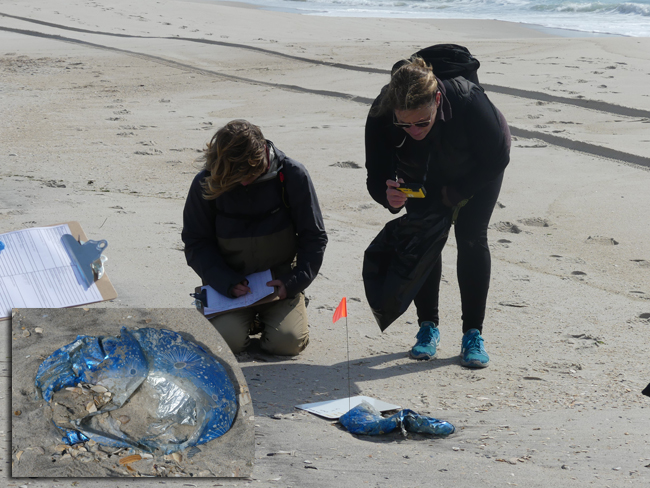
Credit (for this and all photos below): Ryan Strother / NYSG.
Across the Atlantic Coast, balloon releases occur at funerals and memorials, awareness-raising events, and at celebrations like weddings and graduations. Many people who organize and participate in balloon releases do not understand that every released balloon becomes litter, and can be seriously harmful to terrestrial and marine ecosystems. In the 2016-2017 study period, volunteers participating in the International Coastal Cleanup found more than 14,700 littered balloons in Mid-Atlantic states, with 7,383 of those balloons found on the New York coast.
Krista Stegemann Haas, New York Sea Grant’s Ocean and Marine Outreach Coordinator, is part of a Mid-Atlantic effort to study the extent of the balloon debris issue throughout the region, clean up debris, and provide outreach and alternatives to releasing balloons into the environment. Though balloon debris is not the largest contributor to marine debris, Haas points out that “balloon debris is surprisingly more common than you’d expect, and unfortunately these items are often littered by people who don’t realize they’re littering. That’s the reason this project started to focus on balloons.”
A survey conducted by the Ocean Conservancy asked 270 experts with an average of 12 years’ experience in their field to rank the severity of the impacts of marine debris on seabirds, sea turtles and marine mammals. Balloons ranked third for the most impactful debris, due to the likelihood of this debris causing entanglement or being ingested by marine life. Birds may become entangled in plastic balloon ribbons. Foil balloons may also become tangled in power lines and cause power outages.
In an effort to better understand the impacts of balloon releases on Jones Beach, as well as clean up marine debris, Haas organized her second and third coastal cleanup and balloon surveys at Jones Beach this past spring and, most recently, in early November.
Volunteers equipped with cameras, trash bags, and clipboards walked a mile along the western end of Jones Beach, keeping track of litter by type before picking it up. Found balloon debris was marked with a red flag, after which volunteers recorded specific data and photographed the item before taking it with them to be discarded properly.
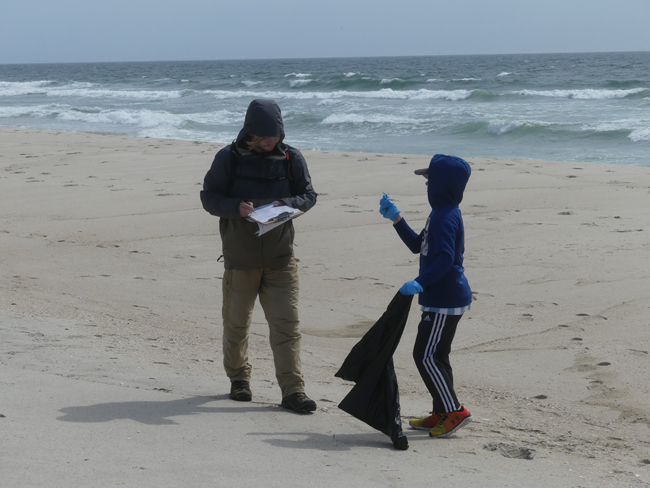
Volunteers recorded this information to help paint a picture of the balloon debris problem in New York. They marked GPS waypoints and indicated the area of the beach where each balloon was found; whether the balloon was latex, foil, or ribbon only; as well as its shape, color, and condition. After release, balloons either burst due to atmospheric pressure changes, or deflate. Sometimes just nubs or pieces of the balloon are found after the balloon breaks apart. Additionally, types of general litter like fishing line and plastic cups found on the beaches were also picked up and tallied according to type.
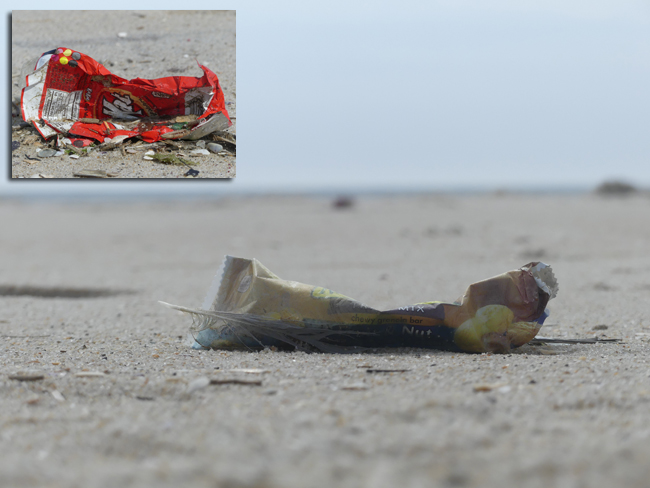
At the spring beach cleanup and survey, 195 balloon debris items were found over the mile of beach surveyed. During a November survey, 309 balloon debris pieces over the same mile of beach were found and picked up. In November, those 309 balloon debris items made up just over 15% of the total debris collected that day.
Many people believe that latex balloons are biodegradable, but that isn’t really true. Latex balloons may biodegrade over time in the right conditions, but the marine environment doesn’t offer up those conditions, and even if it did the process still takes a long time. People may think they’re releasing an environmentally friendly item when in fact they’re not. Strings attached to the balloons may be made of completely non-biodegradable materials under any circumstances.
For picturesque send-off ideas that commemorate a special event without contributing to the myriad problems caused by balloon releases, visit joyfulsendoff.org for picture-perfect, eco-friendly alternatives to balloons.
This project is funded by the NOAA Marine Debris Program and led by the Mid-Atlantic Regional Council on the Ocean (MARCO), with NYSDEC and the EPA involved in New York portions of the survey.
Here are some additional photos from this past spring's marine debris clean-up at Jones Beach:
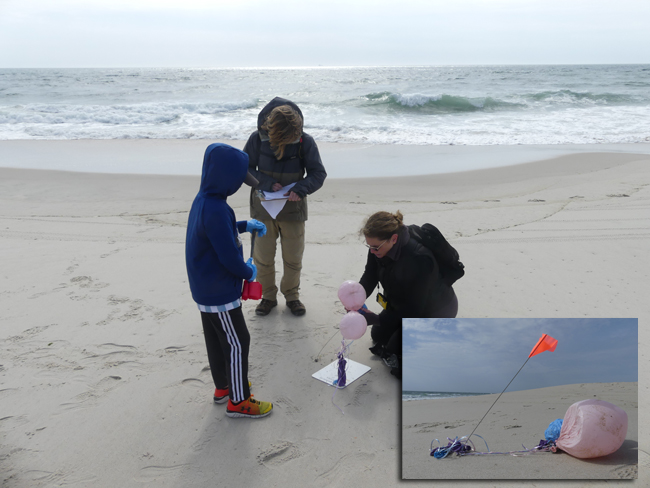
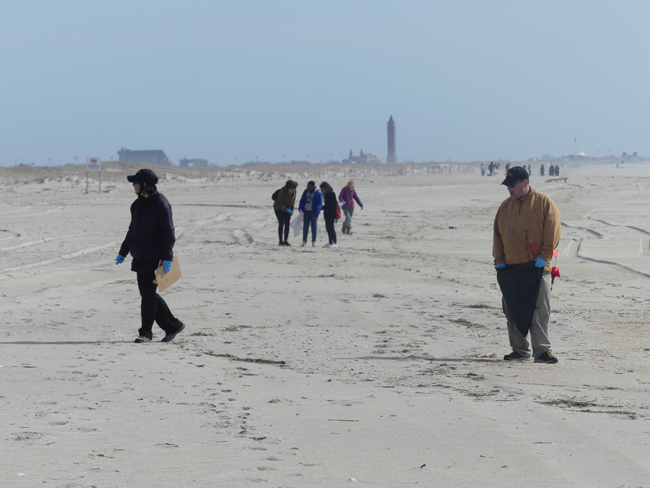
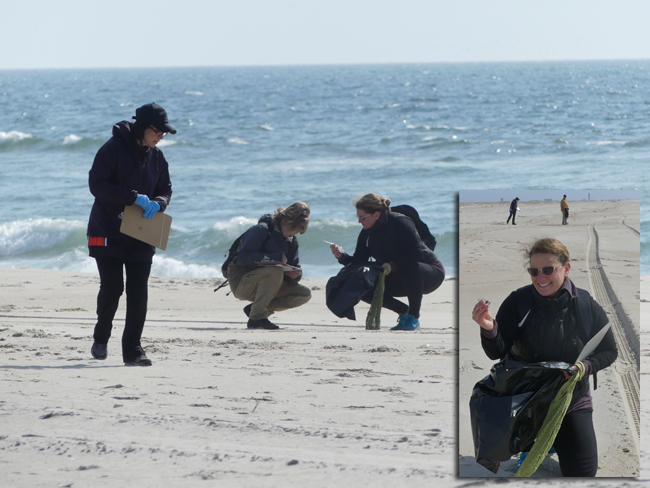
More Info: New York Sea Grant
New York Sea Grant (NYSG), a cooperative program of Cornell University
and the State University of New York (SUNY), is one of 33 university-based
programs under the National Oceanic and Atmospheric Administration’s
National Sea Grant College Program.
Since 1971, NYSG has represented a statewide network of integrated
research, education and extension services promoting coastal community
economic vitality, environmental sustainability and citizen awareness
and understanding about the State’s marine and Great Lakes resources.
Through NYSG’s efforts, the combined talents of university scientists
and extension specialists help develop and transfer science-based
information to many coastal user groups—businesses and industries,
federal, state and local government decision-makers and agency managers,
educators, the media and the interested public.
The program maintains Great Lakes offices at Cornell University, SUNY
Buffalo, SUNY Oswego and the Wayne County Cooperative Extension office
in Newark. In the State's marine waters, NYSG has offices at Stony Brook
University in Long Island, Brooklyn College and Cornell Cooperative
Extension in NYC and Kingston in the Hudson Valley.
For updates on Sea Grant activities: www.nyseagrant.org has RSS, Facebook, Twitter, and YouTube links. NYSG offers a free e-list sign up via www.nyseagrant.org/nycoastlines for its flagship publication, NY Coastlines/Currents, which is published quarterly. Our program also produces an occasional e-newsletter,"NOAA Sea Grant's Social Media Review," via its blog, www.nyseagrant.org/blog.